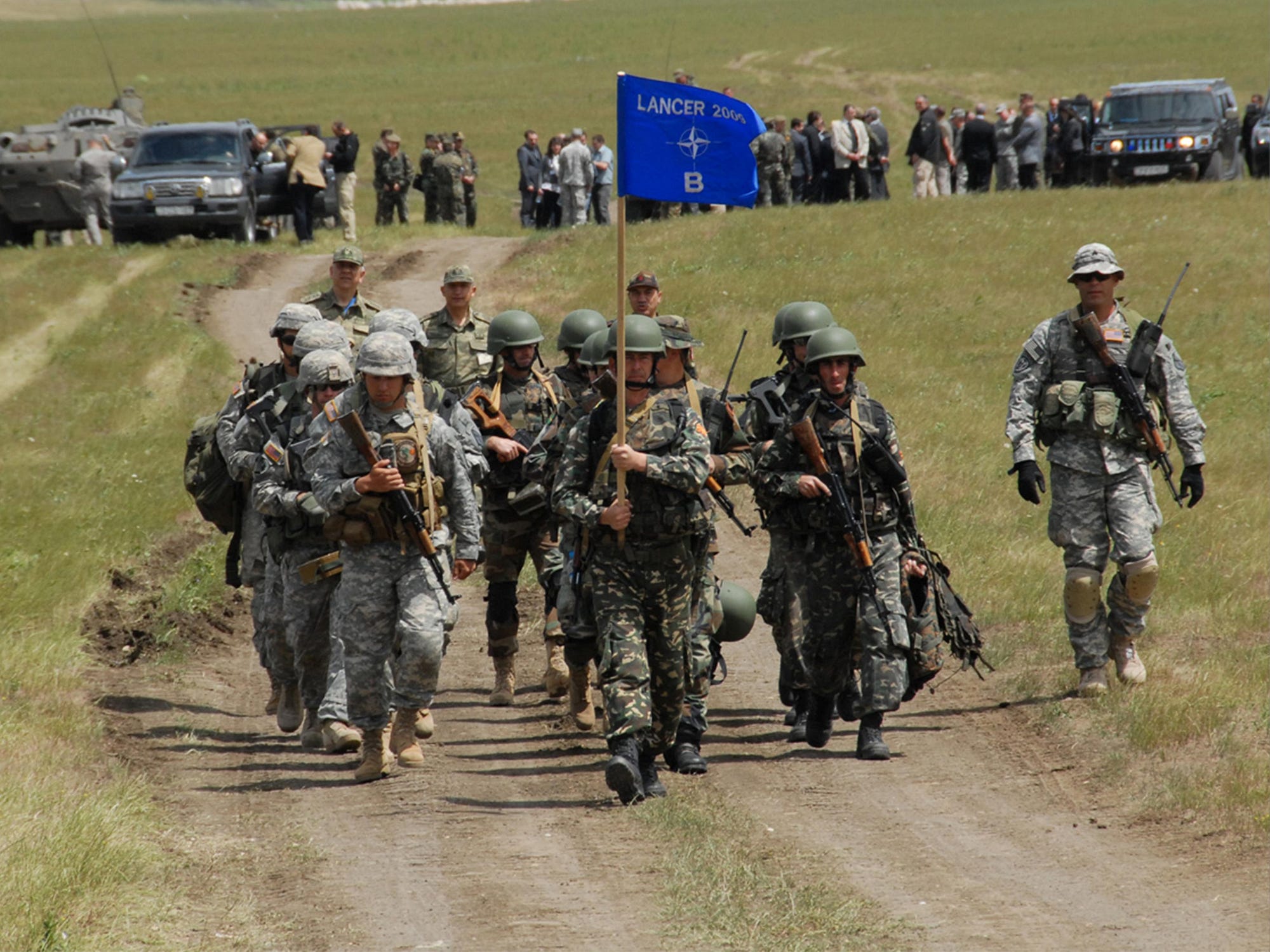NATO already has a response force primed to deploy in a few days. But alliance secretary general Anders Fogh Rasmussen said on Sept. 1 that NATO would stand up a new unit as a “spearhead within our response force—a very high readiness force able to deploy at very short notice.”
“This spearhead would be provided by allies in rotation and could include several thousand troops, ready to respond where needed with air, sea and special forces support,” Rasmussen added.
“This force can travel light, but strike hard if needed,” the secretary general continued. Other NATO officials told reporters that instead of the five days the alliance needs to deploy the regular response force, the new rapid reaction unit could mobilize its 4,000 soldiers in two days.
Rasmussen said the new force will require new command centers, prepositioned equipment and supplies and new intelligence-gathering capabilities. All these things cost money. “I expect a commitment to increase defense investments as our economies recover,” Rasmussen said.
The secretary general cited instability in “the south”—presumably in North Africa and the Middle East—as one reason for establishing a new quick-reaction force.
But his reference to Russia “intervening overtly in the Ukraine” seems the more proximate motivation. NATO believes that more than a thousand Russian troops, backed by tanks, are in eastern Ukraine supporting separatist rebels.
In fact, the conflict could engulf all of Ukraine. Russian president Vladimir Putin reportedly told a European official that Russia could“take Kiev in two weeks” if it wanted to, according to one Italian newspaper.
 The Baltic states of Estonia, Latvia and Lithuania also fear possible Russian invasion. Those countries are NATO members, as is Poland, which suffered its own Russian—actually, Soviet—invasion in 1939.
The Baltic states of Estonia, Latvia and Lithuania also fear possible Russian invasion. Those countries are NATO members, as is Poland, which suffered its own Russian—actually, Soviet—invasion in 1939.
NATO photo
But a NATO quick-reaction force is unlikely to actually deter Russia. For starters, a deterrent is only as effective as it is credible. And military credibility is what the new force will lack.
Prepositioning mechanized units in Eastern Europe is a possibility. But as U.S. troops discovered when deploying from Germany to Bosniain 1995, it’s hard moving tracked armor long distances. Harder when you have to travel fast.
It seems more likely that the new force will include light infantry, wheeled armor and special forces—all easier to move by air or road than heavy tanks. While these light troops might have a fighting chance against irregular troops such as Ukraine’s eastern rebels, they wouldn’t stand a chance against a Russian tank regiment.
To say nothing of Russian warplanes.
To pay for the new force, Rasmussen said he expects the alliance’s 28 member states to boost their defense spending. That’s optimistic thinking at a time when southern European economies such as Greece and Spain are struggling and French politics are a mess owing to lagging growth. Ukraine crisis or not, this is hardly an auspicious time to grow military budgets.
Ultimately, this new NATO force would be little more than a speed bump should Russia mobilize even a fraction of its nearly three million active and reserve troops.
Which suggests that it’s symbolic—or a tripwire force. Put the rapid-reaction force in Russia’s way, the thinking goes, and Moscow would have to back down … or risk a wider war with the whole alliance.
For this approach to work, Russia must believe that Belgium, Spain, Norway and other NATO members would be willing to go to war against a nuclear-armed former superpower. Big assumption.
There’s another joke. The only reason NATO has stayed together all these decades is that it doesn’t do anything. Its combat operations to date include small contingents in Afghanistan, some trainers in Iraq and a few fighter patrols over the Baltic.
At top—U.S. troops during a NATO exercise. U.S. Department of Defense photo
No comments:
Post a Comment